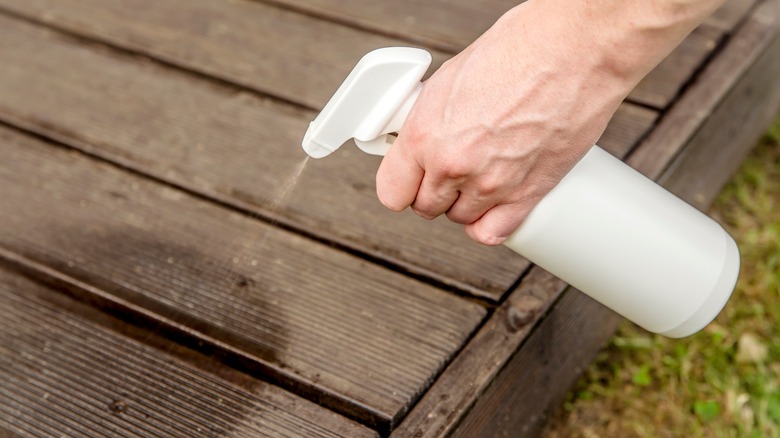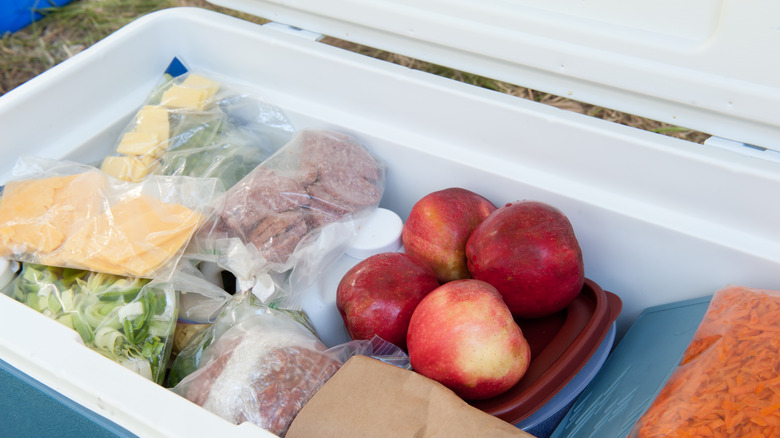Take a few preventative measures
Once you’ve picked a safe campsite, your next line of defense is a makeshift moat. Instead of doing your meal prep and eating on a picnic table, bring a folding table. Then, fill four small containers, like jars or plastic lunchboxes, with water and place each leg of the table inside a full container. As the ants try to climb the sides of the jar to get onto the legs, they’ll soon realize that a watery trap awaits them and turn around.
But don’t stop there. Since ants are attracted to food, it’s always best to keep your campsite clean. In between meals, store your food in sealed plastic containers, an ice cooler, or your car. Check for any cracks or crevices that ants can get into and seal them off. Always clean up drink spills properly; a drop to you can look like a pond of sugary goodness to a line of ants. Dispose of all trash in sealed bags away from your space to keep the ants and other pesky critters away from your campsite.
Bring some ant repellents

If you have some white vinegar handy, it can act as a natural repellent for ants. Take a spray bottle and mix a 50/50 solution of water and vinegar. Spray the mixture around the areas that are most likely to attract ants, like any surfaces with food or drinks. For good measure, go ahead and give your camping chairs a good wipe-down as well. While white vinegar is not the most pleasant aroma, it’ll fade quickly and get the job done.
Cinnamon essential oil is another ant-repellent that’s non-toxic to humans. If you have time before your trip, order a bottle of cinnamon spray and spray it around eating areas. If you’re already on your trip, head to the baking aisle at the nearest grocery store and grab a bottle of pure cinnamon oil. Mix half a cup of water with 25 drops of the oil. Shake the mixture and spray generously. The ants will get the memo in no time.

